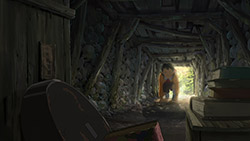 |
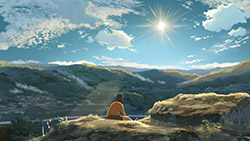 |
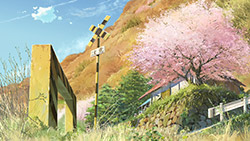 |
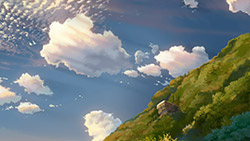 |
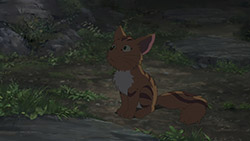 |
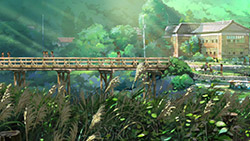 |
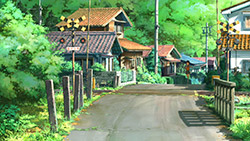 |
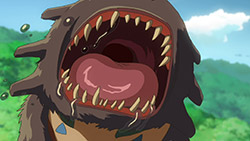 |
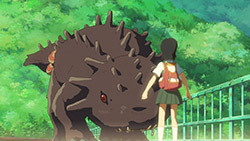 |
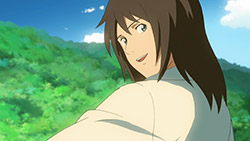 |
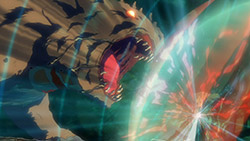 |
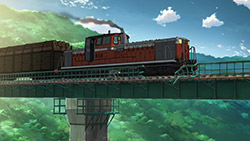 |
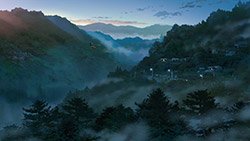 |
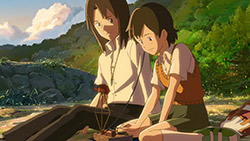 |
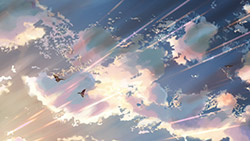 |
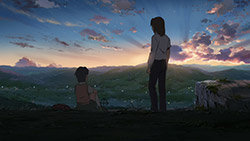 |
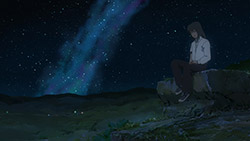 |
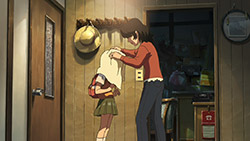 |
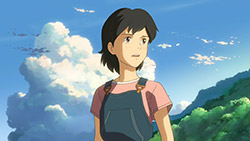 |
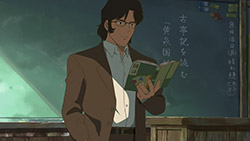 |
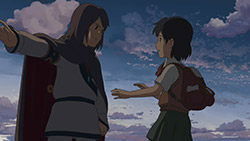 |
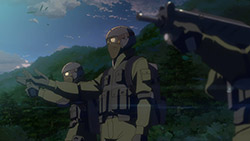 |
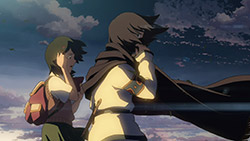 |
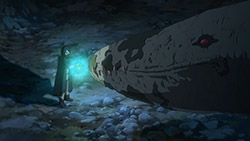 |
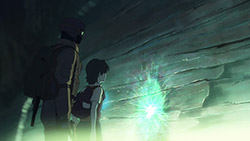 |
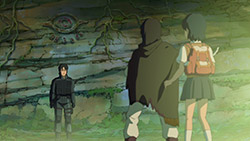 |
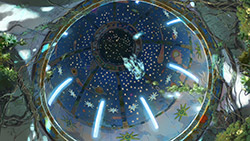 |
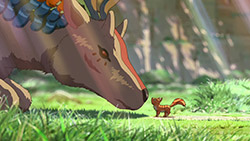 |
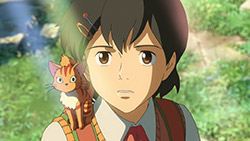 |
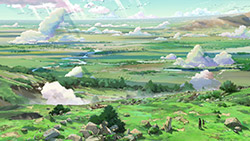 |
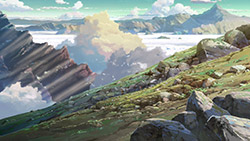 |
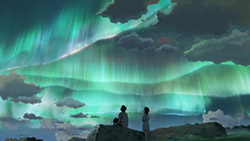 |
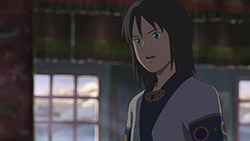 |
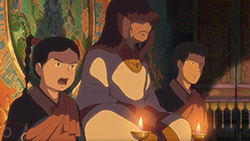 |
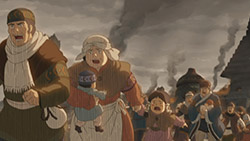 |
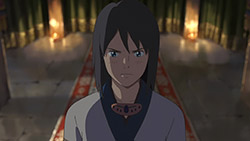 |
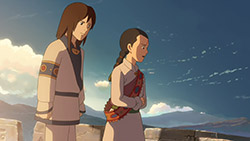 |
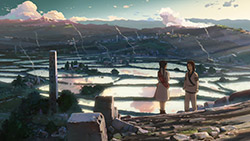 |
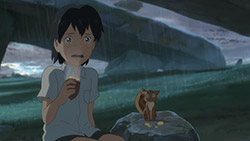 |
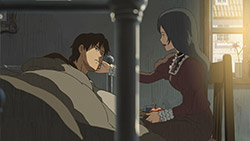 |
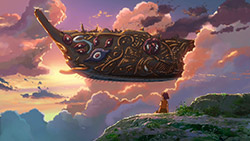 |
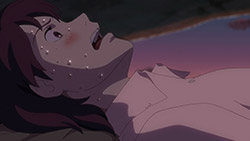 |
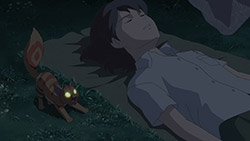 |
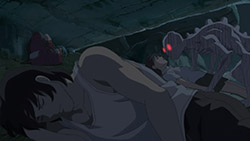 |
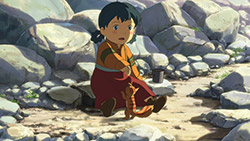 |
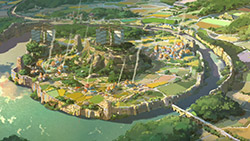 |
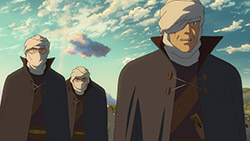 |
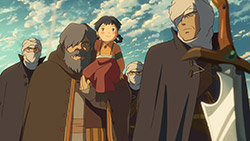 |
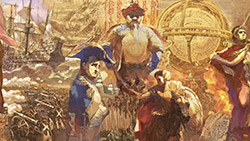 |
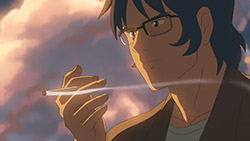 |
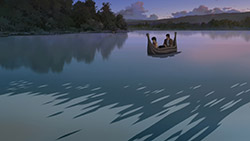 |
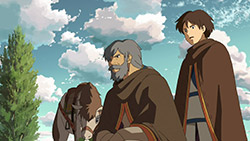 |
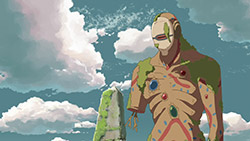 |
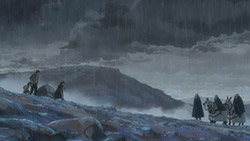 |
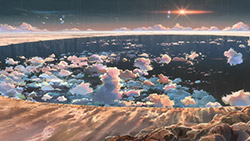 |
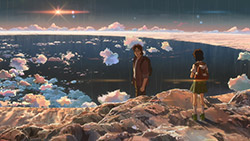 |
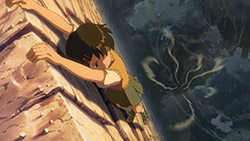 |
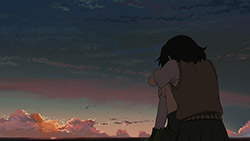 |
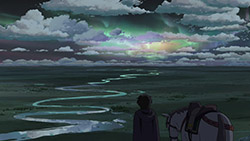 |
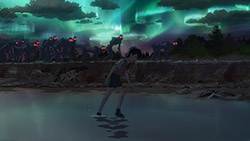 |
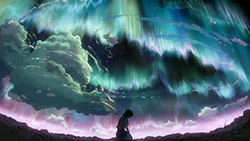 |
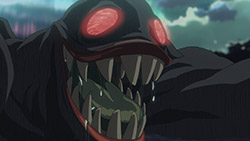 |
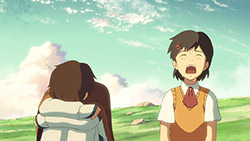 |
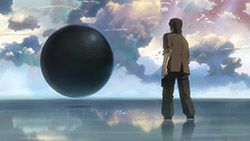 |
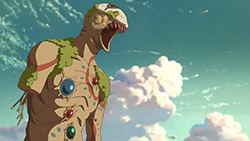 |
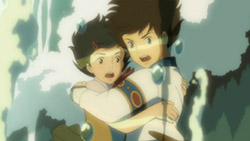 |
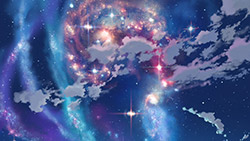 |
 |
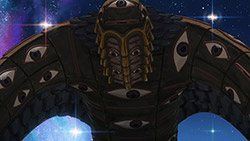 |
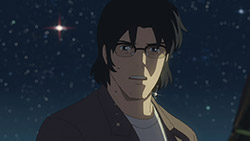 |
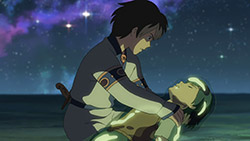 |
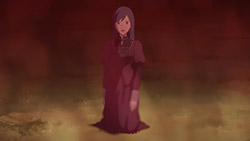 |
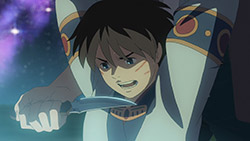 |
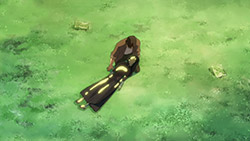 |
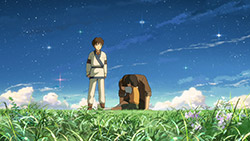 |
「星を追う子ども」 (Hoshi o Ou Kodomo)
“Children Who Chase Lost Voices From Deep Below”
I honestly don’t think it’s an exaggeration to say that Shinkai Makoto is the most important anime director in the world. But while I’ve been arguing for years that the endless examples of him being called “The Next Miyazaki” were off base, it appears as if Shinkai-sensei may have taken them to heart.
Let me back up and say that I consider “The Next Miyazaki” to be a compliment of the highest order. Miyazaki Hayao is the most commercially successful anime director – and the only one to have truly broken through in Western popular culture – for a reason. He’s created a string of wonderful films that have a signature look to them, as well as a unique ability to appeal to children and adults. He’s a master storyteller, an artist at combining simplicity and profundity, and an auteur of the highest order. So it’s not a matter of “defending” Shinkai from the charge – it’s simply that up to now, I don’t think it’s been very accurate. I think the mantle would have fit much more naturally on the shoulders of Hosoda Mamoru (Summer Wars, The Girl Who Leapt Through Time). Like the master himself, Hosoda’s films have a slickness to the storytelling and an undercurrent of wistful humor. Both men, for me, are masters of prose in animation form.
So what of “the most important director”, Shinkai? If those men are geniuses at spinning tales, Shinkai is a visual poet. His works are stranger and more distant, sometimes awkward in the narrative construction and resolutely earnest rather than gently playful. But above all, they’re beautiful. With a far leaner spine of story, Shinkai is able to transport the audience by the sheer beauty of his art, the way a poet does – every Shinkai movie, in its way, feels as if it’s a window into his soul. His stories haven’t always measured up to his visuals, but in the sublime Byōsoku 5 Centimeter I believe Shinkai achieved transcendence. For me, the first of the three stories that comprise the film, “Cherry Blossoms”, is the most perfect 25 minutes of animation ever created. In the simple and heartbreaking story of a pure love between two 13 year-olds separated by fate and their journey towards one last meeting, Shinkai found a narrative that suited his muse perfectly. For all the agonizing detail of his art, his stories are at their best when exploring simple themes of loss and longing. The rest of that movie isn’t at the same level narratively (though it’s still superb) but that first chapter stands alone as a perfect marriage of story, art and a gorgeous soundtrack by piano composer Tenmon.
So when I say Hoshi Ou Kodomo is Shinkai’s most prosaic work, I don’t mean it in a positive sense. There’s no question that the director has come a long way from the days where he produced entire films on his Mac. While some standard Shinkai themes are explored here, the presentation is far more orthodox and polished than in any of his earlier films. The character designs are eerily reminiscent of Ghibli – as is the animation if you don’t look too closely – and the story is far more linear and straightforward than in any Shinkai film to date. Mind you, this is very good prose for the most part, but it’s still prose and I can’t help but feel that fewer words serve Shinkai better. There’s too much of everything here – too much story, too many characters, too much structure. Some of the grace and spare elegance of his best work is missing. Yet, in the end, it’s still a transformative experience and I think there are a couple of reasons for that.
First, and foremost, Shinkai-sensei has lost none of this visual magic. Simply put, the man is an artist of the highest caliber – no one living or dead can do as much with color or light in the animation medium. I’ve said it before, but Shinkai’s art isn’t photo-realistic – it’s beyond realism. The man is somehow able to capture the essence of what we see in the real world and present it in a way that speaks to the heart, as if we’re seeing a Platonic ideal of a sunrise or a cloud-dappled sky with a bird soaring, or a train crossing a snowy landscape with a lone mountain behind it. To call Shinkai’s backgrounds beautiful simply doesn’t do them justice – no animator before or since has been able to move me to tears merely by the gift of his art, but Shinkai can. And Hoshi Ou Kodomo is an incredibly beautiful film, start to finish. Not even Ghibli can match Shinkai in this area – visually, this is all I could ever hope for, and more. There are times, frankly, when the urge simply to stop and gape takes away from the story itself, and this has been an occasional problem for Shinkai as his stories aren’t always cogent and compelling. And sadly, there are times during this film when that’s the case.
The other reason I believe “Children Who Chase Lost Voices” ultimately succeeds as a whole (though not to the extent “5 CM” does) is that Shinkai’s poet’s soul can still communicate simple and pure emotions as well as anyone in anime, even with all the makeup and pretty clothes they’re wearing here. For all it’s big-boy pants and polish, this is still a Shinkai film at heart and that means it’s about things all of us understand – the pain of losing someone we love and the desire to be with the one we love for all eternity. Shinkai – who left behind his sci-fi trappings for the gritty realism of Byōsoku 5 Centimeter – here embraces full-on fantasy for the first time in his career. The setting is somewhere in rural Japan, seemingly sometime in the recent past. A young girl, Asuna (Kanemoto Hisako, Ika from Shinryaku Ika Musume) lives alone with her mother, who’s busy with her nursing career and rarely home. Her father has passed, and the girl spends much of her time wandering the gorgeously rendered mountain landscape accompanied only by an odd little orange and white cat she’s called Mimi (Takeuchi Junko).
It’s one one of these trips that she’s confronted by what appears to be some sort of dinosaur on a railroad bridge outside of town. She’s saved from the creature by an oddly-dressed teenaged boy named Shun (Miyu Irino). He speaks of being from a foreign country called Agartha, a name Asuna hears later in class from her new teacher Morisaki-sensei (Inoue Kazuhiko, Nyanko-sensei from Natsume Yuujinchou) in a lecture about underworld myths from many cultures. It’s at this point that the story begins to get very complicated, as the crystal Asuna uses in her homemade radio kit reveals itself to be a “Clavis”, a fragment of the same crystal that Shun carries, and a key to opening the gates of the underworld. Some very Spielberg-like elements are introduced here, with a paramilitary organization interested in obtaining the key and a chase sequence through the hills and caves in the company of a boy who reveals himself to be Shun’s brother Shin (also voiced by Irino Miyu). The story eventually leads to the underworld of Agartha itself, a place which Morisaki-sensei has a profound interest in.
Much of the second half of the film takes place in this underground world of Agartha on a journey to the Gate of Life and Death, and it contains some of the most beautiful animation and backgrounds you’ll see, even in a Shinkai film. There are some beautiful ideas as well, such as the Quetzalcoatl, the ancient Gods who retreated to the underworld thousands of years ago in the company of a small group of mortals when the humans on the surface no longer needed them. Taking the forms of extinct species and Shinto Kami, they’re a sad and potent reminder of all that has been lost. There’s a larger story too, of surface dwellers who’ve come to Agartha in the past and decimated the land, and a redemptive journey for Shin, a lost boy trying to find his place in a dying world that’s rejected him. There’s real power, too in Morisaki’s tale of an undying love for his dead wife and his inability to move on without her. But ultimately, it’s all too big. I think Shinkai is trying to keep too many plates spinning here, and it doesn’t suit his writing style as well as a simpler story would. The larger narrative of Agartha plays like second-tier Ghibli, and the ending comes and goes much too quickly. The balance of the film is off in the sense that 110 minutes is spent building to its climactic moment, and the movie is over in less than five minutes afterwards. Considering the complexity of the story and the slow-paced buildup, the postscript should have been much longer. Again – for Shinkai, I really believe simpler is better.
And yet, ultimately, there’s real power in that ending and real empathy for the characters. Some of it is of course Shinkai’s ability to touch the soul by way of the eye, which is unequalled and has never been greater. But even under all the unneeded padding the story itself still boils down to three lost souls – all of whom are lonely and grieving for a part of themselves that’s lost forever. The lost and the lonely are always given a compelling voice by Shinkai, who seems to understand them on a very fundamental level. It helps that the cast – Inoue-san is a particular standout – is uniformly excellent, though it does seem odd to hear familiar voices in a Shinkai film, even if they are superb actors all. Tenmon again provides the score, and again it’s lovely. It’s much more subdued here than in Byōsoku 5 Centimeter, which some may find an improvement. I found his earlier score to be the more powerful, however, and rather than being intrusive it almost became a character in the movie itself.
Ultimately, I think anyone who considers themselves a serious fan of anime needs to see every Shinkai film, and I cannot imagine anyone not being able to enjoy this one for the art and animation at the very least. How successfully the film works as a story will vary quite a bit depending on the viewer, I suspect, though for me the bittersweet pain that’s inherent in Shinkai’s narrative voice comes through clearly in spite of some missteps here. Shinkai is still a young man both chronologically and artistically – he’s only 38 years old and this is only the fifth time he’s directed what can truly be called a feature. There’s a part of me that worries that Shinkai’s writing may not age as well as his art. There’s a heartbreaking innocence to his worldview, a poet’s idealism that may or may not transition into something just as compelling as impending middle-age either mellows or deepens it. But whatever happens I eagerly await the next Shinkai work as I do with no other director, because he’s capable of soaring genius and inspiration that no one else in anime has proved the equal of. He’s a truly unique and singular talent, and I count myself lucky to be an anime fan while he’s at the peak of his creative powers.
ED Sequence
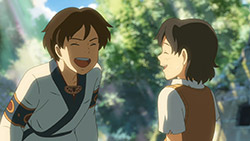 |
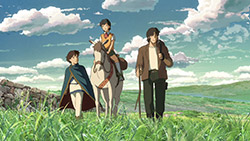 |
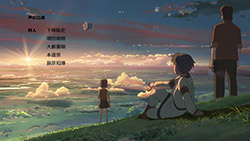 |
ED: 「Hello Goodbye & Hello」 by 熊木杏里 (Kumaki Anri)

This was a beautiful movie in its own right–any director who could have directed this feature would have earned a lot of props from me. Just goes to show that some people really are living up to the hype.
Hoping for more success to you, Shinkai-sensei.
Well said. My mind was blown when I first got into Anime/Japanese Culture and the sorts for the first time and I saw 5 Centimeters Per Second. Seeing it all wooshed me back to those feeling I had, when I saw Miasaki’s films like Spirited Away, Howls Moving Castle, when I was younger, except in a much darker place, at least for me. It’s no doubt that Miasaki is amazing, but Makoto is a amazing film maker in his own right. He has a very distinctive style. They are both so extraordinary, I wouldn’t dare start comparing one to the other.
Nice write up GE.
I felt you captured the criticisms and the current state of the director well. I came in for impression of the movie (despite having seen it already for almost 2 weeks now) and got a bit more reading than I expected.
Thank you.
I enjoyed reading through this post Enzo, and I really enjoy Shinkai-sensei’s movies. A visual poet indeed! Overall, it felt like too much time was spent on the technical aspects instead where it counts, like tying up the story, characters, and themes nicely. That said, I thought the background research on mythology and earth legends was great, and the night terror scene was genius
A very well made movie, I watched this for the sake of watching it but in just less than 10 minutes from the beginning of the film it immediately captures my interest for being something that goes beyond what I expected to see.
Searching for a lost love one has made people go to extreme heights just to be with them again, a story of sacrifice, this is what the movie is all about. The animation was amazingly beautiful and detailed, the music are nice and appropriate. As for the characters, I initially find Asuna’s character not to my liking but eventually like her personality. Overall I enjoyed this movie very much.
I can agree that the drawings look like Gibhli….and 5CM was much more beautiful….even yakusoku no basho movie was much prettier too. But I felt this movie was very magical and had a better story than his previous films (not counting 5CM) Not being a critic, I enjoyed this movie and I have no complaints. Im just content being able to watch Makoto Shinkai after some long wait.
I watched Byousoku 5 centimeters about ten times. That’s probably my favorite anime of all time. Way above any ghibli for me.
That said, I didn’t like very much Hoshi o Ou Kodomo.
Sure it’s beautiful. The visuals are even better than Byousoku’s ones and I doubted that was even possible.
However the story seemed quite subpar to me. Didn’t like any of the characters but Morisaki. And the progression of the “quest” felt a bit forced, as if it was just an excuse to show nice visuals.
Tenmon was also a lot better in past Shinkai movies. I don’t remember any piano piece after watching it whereas Byousoku was full of memorable compositions.
I might actually like it better on a full cinema screen. I’ll probably see that in june at the Annecy festival of animation. They had Byousoku 5cm in 2008, they’ll probably have the new Shinkai programmed this year.
I was probably expecting too much of that movie. But I still feel a bit disappointed.
Great writeup. Another thing that’s so distinct with shinkai’s work is that he draws a TON of attention to minor visual details. However, because he draws the attention he does to them, they seem all the more potent. This was especially the case in 5CM, with frequent shots of textures and objects under lavishly fluctuating light. Just look at 5CM’s first part as Takaki is riding the train.
While I enjoyed this movie quite a bit, I feel it lacks those tiny details. I noticed as I was watching this that, really, this movie could be very easily mistaken for a Ghibli movie. While not necessarily a bad thing, I think that for the sake of Shinkai’s own visual/artistic independence, he should approach his next film with that same visual sensitivity exemplified in 5CM. Just my two cents.
Yay! I loved this movie. A lot. I don’t care what bad thing anyone says about it. I love it. Though…I loved it mostly…because of this cutie: https://randomc.net/image/Hoshi%20o%20Ou%20Kodomo/Hoshi%20o%20Ou%20Kodomo%20-%20Movie%20-%2045.jpg Yeah she’s just a minor character, but I couldn’t help but love her right away!
No matter how great his future movies are. Do not forget She and Her Cat. That is his cornerstone work imo !
Not forgetting it at all, Nanashi, but as a five-minute short it doesn’t really qualify as a feature film. I agree it was an important indicator of the genius that was to follow.
Thanks for the lengthy review of course!
I was not keeping track of this release, yet without any previous knowledge, I saw your screenshots and thought “oh a shinkai release…sweet…”
Even though everyone says there is some ghibli in there, it is most definitely something else too.
You put into words what I have always felt about Shinkai’s work. Awesome. He is definitely a visual master, and one of my favorite directors. I can’t wait to see this movie.
I’m so glad you did a post on that movie, I watched it last week and I thought it was amazingly beautiful. The story does lack certain plot hole but within 2 hours, its kinda understandable. We’ve seen worse 😛
WOOOOWWWWWWWWWWWWWW. ;__;
Wooo!!! More Shinkai scenery porn goodness. ^_^
Damn, those screencaps are gorgeous, aren’t they?
That’s (in part) what makes this a Makoto Shinkai film, those beautiful scenes and thanks Guardian for sharing with everyone.
And as you say 5 cm… is one of the better films of Shinkai the first part and Voices from a Distant star are my top from Shinkai the third story was good but most for the visual and as an epilogue (also a good music video).
Absolutely. In every one of his films, I often find myself pausing and staring at an image for quite a while. I am now doing the same with these screencaps.
Oh now I see whats been bugging. Thx for posting this. I been wondering what I haven’t watch yet.
Absolutely what I was thinking about the film. It looks like Miyazaki’s work, but its not a negative thing.
“Shinkai Makoto is the most important anime director in the world”.
Oh wow, this made me laugh. You’re confusing purty pictures with actual animation. He’s a great draughtsman and has a unique visual style but the animation is stiff and lifeless. The story is boring and predictable. He’s also a plagiarist of the highest degree. All of the key ingredients for this film have been plundered from Ghibli, Takashi Nakamura, Hideaki Anno and the list goes on…
Haters gonna hateeeeeeeeeeeee
I don’t think this movie is anything special. It was pretty, and imaginative, but the characters and story were kind of lackluster. It lacks the soul of a Miyazaki work.
(I don’t think Mr Miyazaki. will appreciate you calling him an ‘anime director’ haha. I remember in an interview he said that he sees anime and animation as two different things, and that he identifies himself as a ‘Japanese animation director’.)
I agree that many of Shinkai’s works are gorgeous in visuals but awkward in narrative construction. What made 5cm such a successful piece is perhaps its rather ordinary subject matter – I’m sure a lot of audience (especially the more mature ones) were able to connect with the story and its characters. The plotline wasn’t anything extraordinary, but the sense of resonance I got from it was what gave magic to the film.
Shinkai likes including supernatural elements in his films, though they are not very well controlled in my opinion. The more ‘ordinary’ films like She and Her Cat and 5cm have actually left more impression on my mind.
Based on this and other reviews I’ve read, Hoshi o Ou Kodomo isn’t Shinkai’s strongest work. However, I plan to watch it nonetheless. Thanks for your hard work, Guardian Enzo 🙂
Mr. Miyazaki can say whatever he wants – he’s an anime director. He can also be a pompous SOB who seems to loathe the industry which made him wealthy.
As I said, he’s also an auteur of the first order and the most successful anime director of all time. The reason I say Shinkai is more important is that unlike Miyazaki, his career is mostly in front of him. Miyazaki is still in his creative prime, but he threatens to retire every time he finishes a film and sheer calendar reality dictates that he can only go on for so long.
I was under the impression that you see Mr Miyazaki as a SOB, your reply just confirmed my suspicion lol
You’re way off. I consider him arguably the greatest anime director of all-time – I just think he can be an SOB sometimes. He’s prickly and difficult with the press, by his own admission was a terrible father and often seems to have an extremely negative opinion of his colleagues both inside Ghibli and out.
Listen, he’s entitled – he’s Miyazaki. And I think he’s a good person, it’s just that he sometimes makes it difficult to like him. His museum is certainly a marvel though, I’ll give him that…
I think most prominent artists have certain quirks that define them and Miyazaki is no different. He brought us Totoro and for that alone, he can be as big of an jerk as he likes and I’ll still be grateful ;P
Right, pardon me, let me rephrase this… I had the impression that you can at times see him as unlikeable.
Miyazaki’s surges of unpleasantness are quite well-known in the industry, aren’t they? This aspect of him is almost famous as his cinematic talents.
Is it just me, or is the cat on the heroine’s shoulder reminiscent of Nausicaa?
To be blunt, I think Shinkai has done a “homage” to lots of Miyazaki work here. There are elements of Nausicaa, Laputa, and Spirited Away, though for me the most obvious influence is Princess Mononoke (which I consider the creative pinnacle of Miyazaki – and Ghibli).
Except “homage” may be a bit of an understatement.
It’s more like extracting the exact same elements, plopping them into his own “original” story, and putting another overcoat over them.
I miss the Hoshi no Koe days
Still waiting to watch this, but it’s nice to see RC cover it.
Speaking of Ghibli, I’ve always wondered why RC has never covered any of their films. Certainly, Ghibli doesn’t need any more attention, but Ghibli’s works are arguably the most important films of Japan, and certainly the most beloved as well as critically successful. I would never compare Shinkai or even Hosuda and Kon to Miyazaki, Takahata, or Kondou not that they aren’t spectacular directors. Their styles and themes are just too different.
As for Miyazaki being a SOB sometimes, haha, I can agree with you. But I don’t think he loathes the industry. And I don’t think he’s ever been concerned with money.
I would like to know where I can watch this, Message me on there myanime list.com
I can’t speak for Divine, but I’d be happy to cover any Ghibli film here – I covered “Arrietty” over at LiA and I see no reason why I wouldn’t blog Goro’s 2nd film at both places when a subbed version becomes available.
Hopefully Kokuriko zaka Kara is better than his first effort which was mediocre at best.
Thanks for the very long review and the screen caps look amazing. Might just check this out over the weekend.
Nice writeup! I’m excited to watch this.
Yeah… most films these days are hyperrealistic. The lens can see more detail, at greater speeds, perhaps at wider angles, and further away than the human eye. The computer is making sure that every last detail is in its place, with the right amount of light cast upon it, its hue harmonize with its surroundings, etc.
We (or rather, our technology) have been striving for this for the past fifty years. Maybe it’s time to look back? Nausicaa and Laputa had technology no where close to that which made this, and yet, I feel that the settings are more believable, the characters, more lovable and realistic, and the storytelling, superb. What we’re really missing nowadays is superb storytelling. I feel that I haven’t seen anything sincerely memorable for a loooooooooong time. But maybe it’s how our minds take in media nowadays too.
I have to agree that Hosoda Mamoru takes the cake as a one of the best anime movie directors.
Can someone tell me where I can download an ENGLISH SUB of this anime?
Looking at the screencaps, I can identify a bunch of Ghibili characters… even the creatures resemble that of Miyazaki’s. I’m pretty sure he is aware of the similarities (or he purposely did that, I don’t know.) I really hope Shinkai can stick to his originality like in his previous pieces though.
yes, I am digging up all of Shinkai’s anime after watching this movie.
I was really confused with the sensei. His history seemed to be pretty far back and it looked as though they lived in a modern world, yet it looked like he was part of some war as far back as WW2. Even Lisa’s clothing was really old. Yet in the present day in the movie they had automatic rifles and high-tech helicopters. What’s up with that?
Kerensa, I think there’s some conflicting signals on the time this is set, which is why I was so vague in my post. Shinkai-dono has mentioned in interviews that he sees this is a sort of “reality-like” world that doesn’t exactly comply with the RW timeline. The closest thing that matches all the variables would probably be sometime in the late 60’s.
The best of shinkai’s work to me is Hoshi no Koe. perhaps because it’s short and convey the better mix of story, visuals and emotion in perfect timings. The cornerstone of his later works.
But saying that Shinkai is the most important anime director in the world is plain plain (lol) or simply wrong. If you say the most important “right now” it might tone down a bit and perhaps shows more respect to other directors in anime history.
Apart from visual excellences and poet style, Shinkai is not a good storyteller, heck if theres a viable story at all. His latest film shows progress in creating more narrative fiction but blatantly ripping off Ghibli style is really lame. Is he really desperate wanting to self fulfilling the praise given by his fans? hmph.. 😉
I do however agree that the better contender for “the best right now” is without a doubt is Mamoru Hosoda! But I don’t even think of him being the next Miyazaki. His depart from Ghibli – after Miyazaki himself handpick him – shows that he don’t didn’t agree with the idea of being Miyazaki or helming Ghibli ideals.
Please don’t hate me for showing no love for Shinkai. and excuse my English it’s not my mother’s tongue.
I think the “right now” is sort of implied when you don’t say “of all time”. And I stand by it.
I don’t want to dump “Next Miyazaki” on Hosoda either – or anyone else. Why does there have to be a next Miyazaki at all? My point was simply that Hosoda is a lot more similar to Miyazaki than Shinkai is.
My favourite Shinkai is The Place Promised in Our Early Days – I found 5 cm per Second (as much as I adore its title) a bit too fragmented. I would have enjoyed it more if they hadn’t been one film, but individual shorts.
I agree that anyone interested in anime should watch all of Shinkai’s work, because there is a lot of potential there. But my complaint with him is that Hoshi ou o Kodomo was a step back – it had the glorious visuals, but it didn’t show any improvement on parts that Shinkai needs to improve on. And the biggest one of that is how to tell a story. He doesn’t know how to do that – Hoshi o Ou Kodomo would have benefitted from a much tighter script, narrative and character development that made sense rather than contained as many diverse elements as possible. I also didn’t find this particularly film as emotionally touching as some of his previous ones – some of which, I think excel at conveying certain feelings.